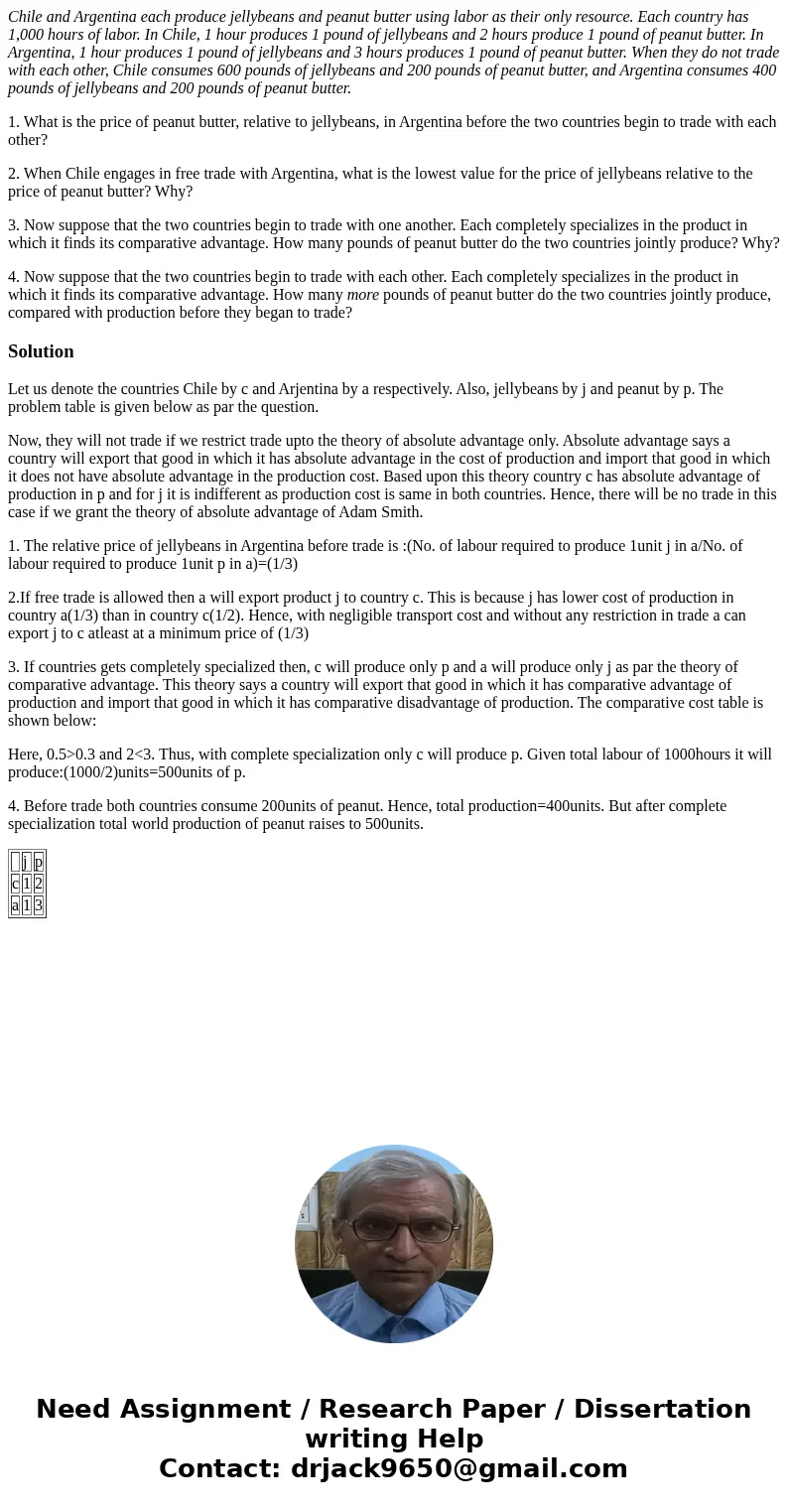Chile and Argentina each produce jellybeans and peanut butte
Chile and Argentina each produce jellybeans and peanut butter using labor as their only resource. Each country has 1,000 hours of labor. In Chile, 1 hour produces 1 pound of jellybeans and 2 hours produce 1 pound of peanut butter. In Argentina, 1 hour produces 1 pound of jellybeans and 3 hours produces 1 pound of peanut butter. When they do not trade with each other, Chile consumes 600 pounds of jellybeans and 200 pounds of peanut butter, and Argentina consumes 400 pounds of jellybeans and 200 pounds of peanut butter.
1. What is the price of peanut butter, relative to jellybeans, in Argentina before the two countries begin to trade with each other?
2. When Chile engages in free trade with Argentina, what is the lowest value for the price of jellybeans relative to the price of peanut butter? Why?
3. Now suppose that the two countries begin to trade with one another. Each completely specializes in the product in which it finds its comparative advantage. How many pounds of peanut butter do the two countries jointly produce? Why?
4. Now suppose that the two countries begin to trade with each other. Each completely specializes in the product in which it finds its comparative advantage. How many more pounds of peanut butter do the two countries jointly produce, compared with production before they began to trade?
Solution
Let us denote the countries Chile by c and Arjentina by a respectively. Also, jellybeans by j and peanut by p. The problem table is given below as par the question.
Now, they will not trade if we restrict trade upto the theory of absolute advantage only. Absolute advantage says a country will export that good in which it has absolute advantage in the cost of production and import that good in which it does not have absolute advantage in the production cost. Based upon this theory country c has absolute advantage of production in p and for j it is indifferent as production cost is same in both countries. Hence, there will be no trade in this case if we grant the theory of absolute advantage of Adam Smith.
1. The relative price of jellybeans in Argentina before trade is :(No. of labour required to produce 1unit j in a/No. of labour required to produce 1unit p in a)=(1/3)
2.If free trade is allowed then a will export product j to country c. This is because j has lower cost of production in country a(1/3) than in country c(1/2). Hence, with negligible transport cost and without any restriction in trade a can export j to c atleast at a minimum price of (1/3)
3. If countries gets completely specialized then, c will produce only p and a will produce only j as par the theory of comparative advantage. This theory says a country will export that good in which it has comparative advantage of production and import that good in which it has comparative disadvantage of production. The comparative cost table is shown below:
Here, 0.5>0.3 and 2<3. Thus, with complete specialization only c will produce p. Given total labour of 1000hours it will produce:(1000/2)units=500units of p.
4. Before trade both countries consume 200units of peanut. Hence, total production=400units. But after complete specialization total world production of peanut raises to 500units.
| j | p | |
| c | 1 | 2 |
| a | 1 | 3 |

 Homework Sourse
Homework Sourse